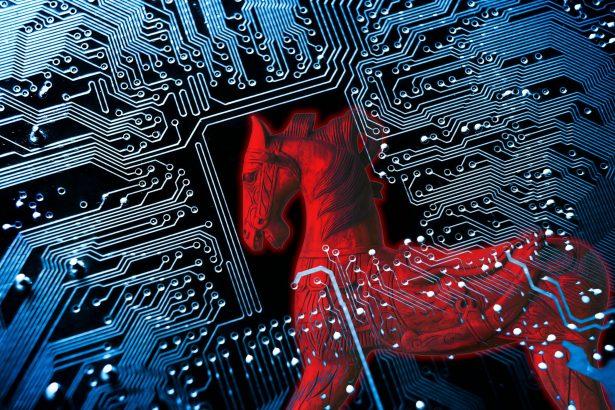StilachiRAT is a stealthy and dangerous malware threat that disguises itself as an Adobe Reader installer to trick users into installing it. Often targeting already vulnerable systems, it acts as a loader for additional malicious payloads like spyware, ransomware, or even remote access tools. Cybercriminals leverage StilachiRAT to establish backdoors on victims’ devices, leading to extensive data theft and system compromise.
This Remote Access Trojan (RAT) is typically distributed through suspicious freeware websites, torrent platforms, and malicious email attachments. Once embedded in your system, it can silently monitor your activities, record keystrokes, extract saved credentials, and even allow hackers to control your device remotely—all while hiding from antivirus detection.
What is StilachiRAT and Why Is It So Dangerous?
StilachiRAT is not just a standalone threat. It serves as a malware loader that brings in more advanced threats by exploiting security loopholes in your system. It modifies registry entries and system files to remain persistent and undetected. By communicating with remote command-and-control (C2) servers, the malware enables hackers to execute commands from afar, making your device a potential tool for larger-scale cyberattacks.
If your computer begins to slow down, freeze unexpectedly, or shows spikes in CPU usage, you might be dealing with this type of infection. Its ability to blend into legitimate-looking installations makes it hard to detect without advanced security software.
StilachiRAT Malware Summary
| Feature | Details |
|---|---|
| Threat Name | StilachiRAT |
| Threat Type | Trojan Horse / Remote Access Trojan (RAT) |
| Detection Names | Generic.Trojan.StilachiRAT, Trojan:Win32/StilachiRAT.A, Backdoor.Stilachi |
| Symptoms of Infection | High CPU usage, system slowdowns, freezing, strange background activity |
| Distribution Methods | Fake software installers, email attachments, torrents, shady freeware sites |
| Damage Caused | Personal data theft, remote system access, installation of other malware |
| Persistence Techniques | Registry changes, encrypted files, backdoor access |
| Danger Level | Severe |
| Associated Email Addresses | None publicly disclosed, typically spread via phishing campaigns |
What Happens After Infection?
Once StilachiRAT gains access to your device, it can:
- Download and install additional malware silently.
- Modify registry files to run automatically at startup.
- Steal login credentials, financial data, and passwords.
- Send all stolen information to a remote hacker.
- Receive remote commands that could include more malware downloads or unauthorized system use.
- Remain hidden using encryption and advanced anti-detection strategies.
Its ability to remain undetected and facilitate further infections makes it a high-priority threat. Many users realize their system is compromised only after seeing signs like suspicious login alerts or unauthorized banking activity.
Manual Removal of Trojan Malware
Important: Manual removal is not recommended for beginners. It involves interacting with system files and the Windows Registry, which, if done incorrectly, can lead to system issues.
Step 1: Restart in Safe Mode with Networking
Booting into Safe Mode disables unnecessary startup programs, including most malware.
- Press Windows + R, type
msconfig, and hit Enter. - In the System Configuration window, go to the Boot tab.
- Check Safe boot, then select Network.
- Click Apply and restart your computer.
Step 2: Terminate Malicious Processes
- Open Task Manager using Ctrl + Shift + Esc.
- Navigate to the Processes or Details tab.
- Identify any unusual or unrecognized processes. Be cautious—do not stop critical Windows processes.
- Right-click a suspicious process, choose Open File Location, then End Task.
- Delete the associated file from the opened folder.
Step 3: Delete Trojan Files
- Press Windows + R, type
%appdata%, and press Enter. - Check for any unknown folders created recently.
- Repeat the same for these directories:
%localappdata%C:\Program FilesC:\Program Files (x86)C:\Windows\Temp
- Delete any folders or executables related to the Trojan.
Step 4: Clean Up the Windows Registry
- Press Windows + R, type
regedit, and press Enter. - Go to these registry paths:
HKEY_LOCAL_MACHINE\SOFTWARE\Microsoft\Windows\CurrentVersion\RunHKEY_CURRENT_USER\SOFTWARE\Microsoft\Windows\CurrentVersion\Run
- Look for registry entries with unusual names or links to suspicious files.
- Right-click and delete the unwanted entries.
Tip: Back up your registry before making changes by clicking File > Export in the Registry Editor.
Step 5: Reset Your Web Browsers
Malicious Trojans often tamper with browser settings to redirect users to unwanted sites.
Chrome
- Settings > Reset and clean up > Restore settings to their original defaults.
Firefox
- Help > More Troubleshooting Information > Refresh Firefox.
Edge
- Settings > Reset settings > Restore settings to their default values.
Step 6: Perform a Full System Scan with Windows Defender
- Open Windows Security from the Start menu.
- Click Virus & threat protection > Scan options.
- Choose Full Scan and click Scan now.
Step 7: Update Windows
- Go to Settings > Windows Update.
- Click Check for updates and install all available patches.
Method 2: Automatically Remove Trojans Using SpyHunter
Manual removal can be effective, but it’s time-consuming and may leave hidden components behind. SpyHunter is a trusted malware removal tool that automatically detects and eliminates Trojans and other threats.
Step 1: Download SpyHunter
Use the official download link: Download SpyHunter
Follow these instructions for installation: SpyHunter Download Instructions
Step 2: Install the Program
- Locate the downloaded file, usually SpyHunter-Installer.exe.
- Double-click it and follow the on-screen steps to complete the installation.
- Launch SpyHunter when finished.
Step 3: Scan Your PC
- Click the Start Scan Now button on the SpyHunter dashboard.
- Allow the scan to complete (it may take several minutes).
- Review the detected items.
Step 4: Remove Threats
- Click Fix Threats.
- SpyHunter will quarantine and remove the detected Trojan files automatically.
Step 5: Restart Your PC
Once the cleanup is finished, restart your system to finalize the changes.
Trojan Prevention Tips
- Avoid downloading software from unofficial sources.
- Be wary of email attachments, even from known contacts.
- Keep Windows and applications updated with the latest patches.
- Use a reputable security program like SpyHunter for active malware protection.
Conclusion
StilachiRAT is a dangerous threat that leverages user trust and poor security habits to infiltrate systems. Its loader functionality makes it particularly hazardous because it opens the floodgates to even more damaging malware. If you notice any system slowdowns, unresponsive programs, or odd network activity, it’s essential to take immediate action.
Staying away from untrusted sources and email attachments can significantly reduce your risk. Always use legitimate antivirus tools to regularly scan and monitor your device for such threats.
If you are still having trouble, consider contacting remote technical support options.




